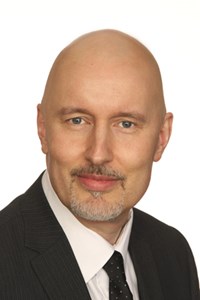As a small and relatively new private foundation, we were intrigued by Kania, Kramer & Russell’s discussion of an emergent philanthropy framework. While our initial debates focused on the ‘newness’ and the key elements highlighted in their article were theoretically interesting, we were more attracted to the ‘how to’ elements outlined in the ‘How to move to an emergent model’ section.
For us, the authors’ move away from their views on strategic philanthropy does not mean that emergent philanthropy loses its own requirement to be strategic. Rather, it honours the notion that the shift from predictive to emergent models requires different processes, communication and cultures to ensure that we can describe the impact of what we are doing.
To this end, the ultimate potential of the article lies in its attempt to explain how emergent philanthropy can be done. Sadly, this does not seem to be the focus of much of the discussion that has occurred. This strikes us as a squandered opportunity. Imagine the incredible value of all the organizations that participated in this debate talking about ‘co-creating strategy’, ‘working the attractors’ and ‘improving system fitness’ – do they embrace these elements, what has worked, what hasn’t, what have they learned? We are sharing our story in the hopes that it inspires more experienced foundations to join a discussion of the ‘how to’ aspects of the article.
Emergent philanthropy could easily have struck us as ‘yup, doing that’ because we were always open to change. But change is not emergence. We found ourselves wanting to make sure that change was not for change’s sake; that it actually led to an evolutionary advance in our impact. Our mission is to provoke innovation and build capacity in social entrepreneurship. To make sure that our individual activities added up to a coherent whole we developed a framework (lovingly referred to as ‘the pie’) that articulates eight key areas needed to build a vibrant social entrepreneurship ecosystem.
Then something strange happened. We saw the power of the pie was not just as a framework to evaluate the sum total of our activities; it inspired us to ensure that each grant, programme and partnership we design advances multiple elements of the pie. For example, an educational programme would not just seek to build capacity for grantees. Rather, we’d see that same programme as a way to harness data to advance policy, or see if it could yield insights to provide new financing tools, and we’d hook the programme into influential networks to share best practices on programme development.
The strategy shows potential in allowing us say ‘yes’ to things, guide their design, and inform an evaluation focused on the social impact of the system, so that, over time, we hope to see the pie as a whole expand, not just each of the pie pieces. Admittedly, we did not co-create the pie (although it draws on the work of many), but it will be a crucial tool in our co-creation work with grantees and partners. We are also beginning to test it out with local leaders who are similarly dedicated to advancing the social entrepreneurship ecosystem.
Where we have struggled is being accountable to our board for our greater focus on learning, an issue the article alludes to under the category ‘organizational structures and systems’. You can’t predict a quantifiable amount of learning; you can’t even really guarantee it will happen. That type of open-ended accountability seems like a blank cheque that would make any board nervous. We see this approach as promising, but it’s still a pilot. Ensuring clear articulation of an emergent strategy requires constant communication, the setting aside of ego, and a shared belief that if we can get that pie moving (fly wheel) we can indeed make social entrepreneurship mainstream.
We share these examples not out of certainty, but from a gut feeling that this work requires a different approach to strategic planning. For us, emergent philanthropy creates the opportunity to share exactly where our own journey is experiencing bumps and opens up the opportunity to learn from others using similar processes to achieve impact. We see value in the specific articulation of the concept, whether it is new or not. We hope others will join us and explain their journey.
Michele Fugiel Gartneris Director, Strategic Investments & Operations, at the Trico Charitable Foundation and Daniel Overall is Director, Collaboration & Innovation.






Comments (0)